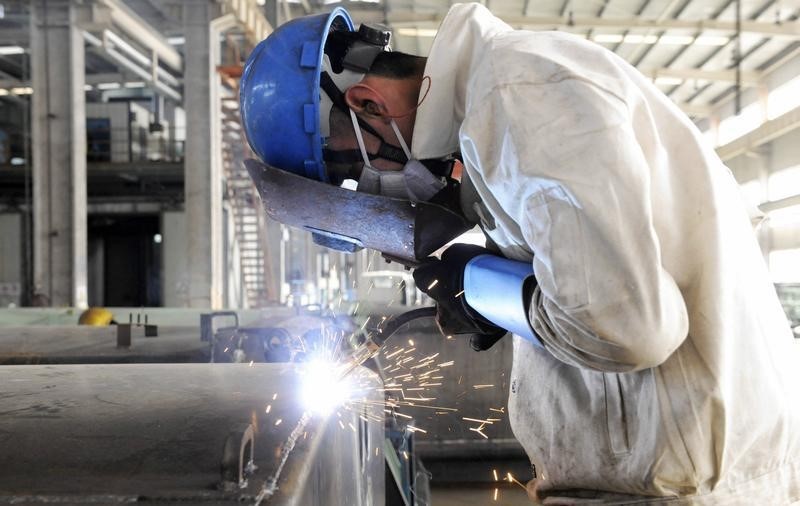BEIJING (Reuters) - Activity in China's vast manufacturing sector contracted for a second straight month in September, an official survey showed on Thursday, adding to signs of weakness in the world's second-largest economy which are shaking global markets.
The official Purchasing Managers' Index (PMI) inched up to 49.8 in September from the previous month's reading of 49.7, according to data from the National Bureau of Statistics (NBS).
Though slightly better than market expectations, it still suggested that conditions were deteriorating, reinforcing views that Beijing will have to roll out even more stimulus measures soon to avert a sharper slowdown.
"Even though the PMI recovered, it was still below the 50-point level and lower than the same historical period," Zhao Qinghe, an official at the bureau said in a statement.
"That showed the relatively weak internal and external demand and the manufacturing sector is still facing relatively big downward pressures," Zhao said.
A reading over 50 points suggests an expansion in activity while one below that points to a contraction on a monthly basis.
Analysts polled by Reuters had expected the figure to dip to 49.6, the weakest level since August 2012, as softening demand at home and abroad left many firms with idle capacity and less appetite for raw materials from iron ore and copper to petrochemicals and coal.
The sub-index for new orders - a proxy for domestic and foreign demand - rose to 50.2 in September compared with August reading of 49.7.
But new export orders contracted for a 12th straight month, albeit at a slightly less alarming pace. The new export order sub-index edged up slightly to 47.9 from August's 47.7.
Sluggish demand forced factory owners to continue laying off more employees, with the employment sub-index at 47.9, the same as in August.
In contrast to the further decline in manufacturing, activity in China's services sector has remained largely steady.
A similar official survey on the services sector showed the official non-manufacturing PMI stood at 53.4, indicating the same pace of growth as in the previous month.
The services industry has been the lone bright spot for the economy in the last few years, helping to cushion a prolonged downturn in the factory sector, but it too has begun to show signs of fatigue in recent months as consumers grow more cautious.
Indeed, a separate private survey showed growth in smaller services firms came close to stalling in September, expanding at its slowest rate in 14 months. The official survey focuses more on larger, state-owned firms.
The government is due to release third-quarter GDP data on Oct 19 and many economists expect growth to dip below 7 percent, which would be the weakest since the global financial crisis.
ANZ economists believe third-quarter growth cooled to 6.4 percent, but could pick up again late in the year as a raft of stimulus measures and higher government spending gradually take effect.
Some China watchers believe current growth levels are already much weaker than official data suggest.
